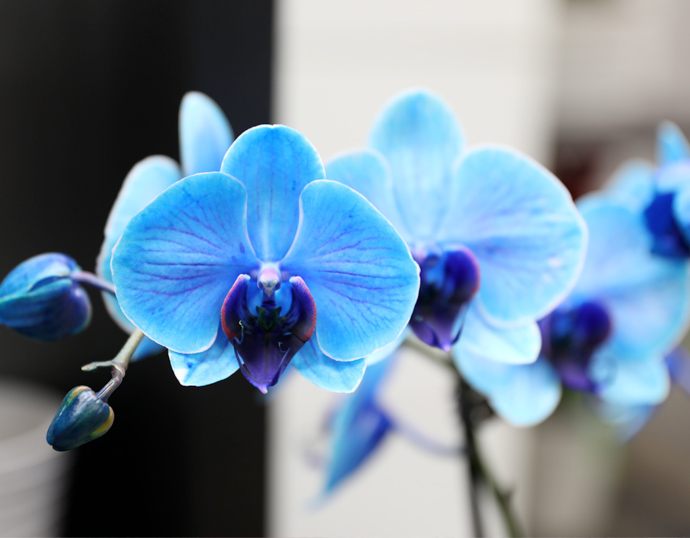
If your orchid comes down with a bacterial or fungal disease or is attacked by pests, there’s a reasonable chance that you can nurse your orchid back to health. Orchid viruses are trickier. Just like the common cold, there’s no cure for plant viruses. Prevention is your best protection against orchid viruses.
Worldwide, orchids are subject to attack by about 30 different viruses, although many are regional or most deadly to a specific orchid species.
Viruses, such as the tobacco mosaic virus, can attack your orchid when transmitted from other plants, mites, nematodes and flying insects, such as aphids and thrips. Poor tool sanitation when handling plants is the most common cause of virus infection.
Laboratory testing is the only way to definitively diagnose plant viruses, but testing is only reasonable for commercial orchid growers and hobbyists with extensive or valuable plant collections.
For casual orchid collectors, the best course of action is to immediately isolate any orchid plant that shows signs of illness until you can determine what the problem is. If your orchid does have a virus, continue to isolate it and disinfect all of your tools before to prevent the spread of disease to your other houseplants.
Depending on the location of the virus, it can be beneficial to trim off infected structures of the plant with sharp and sterile tools to prevent infection from spreading further. Infected orchid leaves, for example, can eventually pass on the viral, bacterial or fungal infection to the central stem of the plant.
Once a disease has reached the "heart" of a Phalaenopsis orchid, it’s very difficult to nurse it back to health. Trimming away extensively infected leaves and sealing off the wound that resulted from trimming is necessary, in some situations, for the plant’s overall health.
As they say, an ounce of orchid virus prevention is worth a pound of cure. If you follow these orchid plant sanitation guidelines, you'll decrease the chances of your orchid contracting a virus in the first place.
1. Thoroughly wash your hands before and after working with plants. This avoids the spread of viruses you may have on your hands from handling other plants.
Copyright Just Add Ice® Orchids 2023